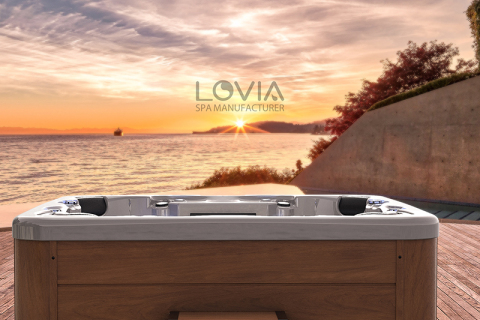
- Home
- >
News
Survey data source: ● National Association of Home Builders (NAHB): According to a survey by NAHB, about 15% of newly built homes are equipped with hot tubs. ● Statista: According to Statista data, as of 2020, about 18% of American households have hot tubs.
Steps to prepare your hot tub for winter: 1. Drain (turn off the power → drain the drain → blow dry the pipes), 2. Clean (clean the surface of the tub → clean the filter → clean the nozzle), 3. Antifreeze measures, 4. Inspection and maintenance , 5. Regular inspections.
10 Tips for Using a Hot Tub in Winter 1. Invest in a good insurance policy 2. Monitor water levels 3. Keep water clean 4. Change water early 5. Turn off jets 6. Be smart about soaking time 7. Stay hydrated 8. Create a retreat plan 9. Smart monitoring 10. Upgrade your outdoor shelter
The size of the hot tub directly affects the number of nozzles. Generally speaking, small bathtubs (such as two-person hot bathtubs) are usually equipped with 5-10 nozzles, while large bathtubs (such as six-person hot bathtubs) may be equipped with 20 or even more nozzles.
The design and use characteristics of hot tubs make them an ideal environment for the growth of Legionella. Legionella grows most vigorously in the temperature range of 25-45 degrees Celsius, and the water temperature in hot tubs is usually within this range.
First of all, from a technical point of view, hot tubs can be placed outdoors. Many hot tubs are designed with outdoor use in mind and have waterproof, windproof and weatherproof properties.
Balboa hot tubs have three operating modes: standard, economy, and sleep. These modes mainly affect heating, which affects energy consumption. Standard mode keeps the water temperature constant. Economy mode reduces energy consumption. Sleep mode turns the heater off completely.
Modern manufacturers generally claim that their hot tubs cost around $1 per day to run, up to $50 per month. However, the actual energy cost of a hot tub depends primarily on the type and power of the heater.
The first thing to consider is whether it can withstand the test of the outdoor environment. Secondly, given the variability of the outdoor environment, durability becomes an important factor in material selection. Finally, considering comfort and aesthetics, the selection of materials also needs to consider the comfort of the human body and the aesthetics of the overall environment.
A hot tub is a facility used for relaxation and socializing, usually installed outdoors or indoors, primarily for domestic or commercial purposes. A Jacuzzi is typically a specific brand of hot tub with advanced features such as powerful jets and other specific massage configurations. Finally, a spa usually refers to a bathtub with powerful jets, often found in commercial settings such as spas or gyms. A spa may include a hot tub or Jacuzzi, but is broader and includes a range of hydrotherapy and massage services.
A quality hot tub will typically last 15 years or more. However, this depends on the hot tub's build quality, frequency of use, maintenance and environmental conditions. In some cases, hot tub problems can occur, such as heater or pump failure, leaks, or structural damage. These problems may require repairs, but when a hot tub has been in use for many years, the cost and value of repairs may decrease.
Hot tubs do not require gas pipes. Most hot tubs are powered by electricity, usually 240 volts powered by a 60 amp GFCI circuit breaker. This method of power supply is not only common, but also safer and more reliable. Compared with gas pipelines, the advantage of electricity supply is that it is more convenient, does not require the installation of additional pipeline systems, and reduces the complexity of the installation process.












